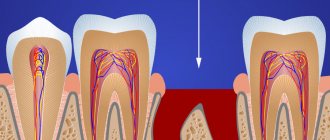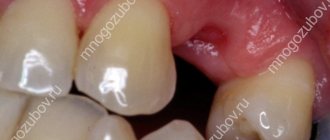Date of publication: 09.24.2018
Tooth extraction at home is a last resort measure that may only be required if it is not possible to visit a doctor. It is worth considering that the procedure is associated with difficulties and a real danger of complications. However, there are times when this is the only way to get rid of the pain caused by a bad tooth.
Tooth extraction may also be necessary if it is a baby tooth with a high degree of mobility. If it is very wobbly and this does not cause discomfort to the child, removal can be done at home.
Important note: it is possible to remove a molar tooth according to all the rules and without harm to health only in a medical institution with the participation of a specialist. Any independent actions by an unqualified person can lead to injuries and lead to dangerous complications. Removal requires not only knowledge and skills, but also special tools.
Content
- When to remove a tooth
- What is recommended to do
- Stages
- What to do after deletion
- Remove wisdom tooth
- Prevention
- Final recommendations
PROMOTION
Inexpensive tooth extraction
from 1000 rub.
Tooth extraction at home is an unsafe event, as there is a high risk of infection. But there are situations in life when it is not possible to seek qualified help. Is it possible to pull out a tooth yourself and avoid complications?
When Removal is Required
Doctors recommend removal if:
- The tooth is destroyed to such an extent that filling will not solve the problem;
- With exacerbation of osteomyelitis;
- In the inflammatory process associated with infection;
- With advanced periodontitis;
- If the tooth is positioned incorrectly;
- If the jaw is damaged;
- With severe looseness;
- If a dental unit interferes with prosthetics;
- With severe caries damage.
There are rules to minimize the consequences of self-removal of a problematic tooth.
Can the root “come out” on its own?
Some patients, due to fear of pain and other discomfort, wrongly believe that if no action is taken, the base will fall out on its own over time. They walk around for many years with rotting bone remains in their mouths, creating a favorable environment for the development and spread of pathogenic microorganisms. An unpleasant odor appears in the mouth. Sometimes the root can actually come out without outside intervention, but this happens extremely rarely.
How events usually develop if you don’t visit the dentist on time:
- Hard deposits and stones form on the surface. The mucous membranes surrounding the base are irritated.
- The gums become overgrown and a severe inflammatory process develops. Subsequently, soft tissue dissection will be required.
Preparatory stage
To reduce risks as much as possible, you must:
- Brush your teeth;
- Rinse your mouth with balm, calendula tincture or chlorhexidine.
- Take a painkiller and wait half an hour.
Prepare:
- Antiseptics;
- Spitting container;
- Tampons and sterile gauze pads;
- Mirror.
The use of pliers and similar tools is prohibited.
Sequence of actions if you need to pull out a tooth at home:
- Cover the tooth with sterile gauze, grasp it tightly and slowly loosen it to remove it from the socket;
- Use tampons to remove accumulated blood;
- Act slowly and forcefully so that no root fragments remain in the hole;
- After extracting the tooth, apply a tampon to the wound and bite it firmly;
- After half an hour, carefully remove the tampon so as not to provoke bleeding.
Do not drink or eat for the next 4 hours. Apply cooling compresses for several minutes. In the next few days, eliminate bad habits and do not use physical activity.
Actions after removal
It is necessary to monitor the patient's condition for several days.
Negative manifestations if:
- The wound bleeds an hour after removal;
- There is clouding of consciousness;
- The person has a fever;
- The pain has become pulsating in nature - an urgent examination by a dentist is necessary, as a jaw injury is possible.
The difference in how to pull out a molar at home or a baby tooth is only in the length of the roots. To minimize negative consequences, it is necessary to work in gloves treated with an antiseptic composition.
Wisdom tooth removal
If pulling out a baby tooth at home is not a particular problem, then with a wisdom tooth things are different. This dental unit can be removed only if it can be firmly grasped and loosened. Cutting the gum is prohibited so as not to damage the nerve of the lower jaw. For convenience, you need to place a tampon between your gum and cheek. “Eights” have longer roots, so independent removal is almost impossible. This procedure must be performed in a specialized institution.
When it is prohibited for an adult or child to pull out a tooth at home:
- If the gums are very swollen and there is no way to act carefully;
- With purulent abscess, with gumboil;
- If a person has a fever;
- If the tooth is crumbled;
- With excessive sensitivity.
Example 6. Restoration of teeth 4 and 5, when only one root remains
In the next total work I would like to highlight the 4th and 5th premolars. In general, the girl’s situation was quite complicated initially at the time she contacted me. Both the lower and upper jaws were restored. Let's look at only the top one.
Front 4 teeth
- these are 1.2, 1.1, 2.1 and 2.2 were entirely made of composite material, under which caries developed. And the teeth we were interested in, 1.4, 1.5, 2.4 and 2.5, were covered with metal-ceramic crowns under which there were metal inlays. Today, such structures are rarely used in advanced dentistry, since the same Cerec technology allows you to achieve excellent results with one module “crown + tooth root”, rather than breaking the structure into an inlay and a crown with an additional adhesive layer. In fact, we place a crown at the root of the tooth with the function of the missing root. There will be a separate example on metal tabs a little later.
So, in the photo below, the crowns were removed, the inlays were removed and carious tissue was removed from teeth 4 and 5, leaving healthy roots
:
If only the root remains of a tooth, this does not mean that it cannot be restored. And let this tooth root be pulpless, i.e. dead - such tooth roots feel great in bone tissue and orthopedic structures can be built on them. Using computer technology and 3D scanning, we first restored virtual teeth:
The following photo shows that on one side we place crowns with an inlay function in place of the 4th and 5th teeth, and on the other opposite side we place half-crowns also with an inlay function.
That is, these are single modular designs - veneers with a root part, which are currently the best for the patient
:
Installing veneers with the root part allows you to completely recreate an aesthetically beautiful dentition:
The stage of temporary prosthetics, which allows the patient to see his smile, plays an important role in the very process of its new formation, since the patient understands that the main problems with the restoration of the remaining teeth, and in fact the roots of the teeth, are left “far behind”:
After installing crowns and half-crowns and restoring the front teeth, our patient’s smile was transformed beyond recognition, the so-called. wow effect:
The clinical example described above can be viewed in detail HERE.
Prevention of complications
The difficulty of the procedure is to avoid infection, since if microbes enter, complications will affect the entire oral cavity. To speed up wound healing, you need:
- When talking, try not to touch the hole;
- Monitor the integrity of the blood clot, which performs a protective function;
- For the first 4 hours after removal, do not eat, chew on the healthy side;
- Brush your teeth carefully and thoroughly, avoiding the socket so as not to damage the blood clot;
- Include food with plenty of liquid in the menu;
- Avoid cold and hot dishes;
- After eating, rinse your mouth with clean water or furatsilin solution to neutralize oozing blood;
- Apply warm, damp compresses to stimulate blood circulation.
Swelling may occur immediately after removal. If pain and swelling disappear within a few days, it means healing is proceeding normally.
Examples of restoration of fifth teeth on the upper and lower jaws
Example 7. A metal tab and caries left only the root of the 5th tooth
A patient came to me with a 3.5 tooth. It was a pulpless tooth - the lower five, it did not have any periapical changes or inflammation in the area of the root apex. The tooth was missing the upper half of the crown part of the tooth. This tooth 3.5 initially had a filling, a metal stump insert was installed in the tooth, quite deep, and a filling was already installed on top. Here's a “puff sandwich”:
As I said in the previous example No. 6, metal tabs are beginning to be used less and less in practice - they have been replaced by modern computer technologies, for example, Cerec. As a result of the atraumatic removal of the metal insert, the bone was preserved, nothing cracked: neither the root nor the remaining bone structure:
The restoration of the bottom five was carried out using Cerec technology in 1.5 hours
:
The “crown + root” module fell into place perfectly, the patient was very pleased with such a quick and effective solution to his problem:
Example 8. The top five were completely destroyed by caries. But the tooth root survived
With this example, I want to show you how deep caries can literally “eat” your teeth. And, of course, try to prevent it from developing like this. The patient is a fairly young man who has decided to radically improve his image. This is a laudable decision, but here are the teeth he came to me with:
Caries on almost all teeth. After removing the carious layer, the remains of the teeth appeared in this form:
Please note that in place of the upper tooth 5
There was practically only one root left with a small side wall. In this case, the same technology of tooth restoration using the “crown + root” module and crowns/half-crowns with an inlay function was used. The result of the treatment, as they say, is on the face:
The goal of treatment, according to the patient, has been fully achieved - a brutal Man
:











